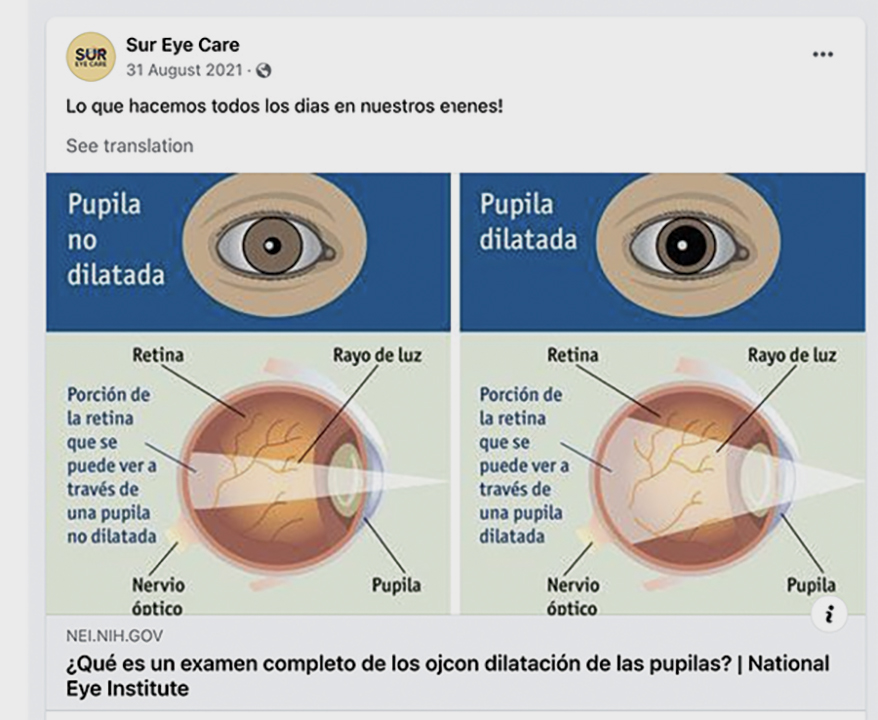AS A BUSINESS owner, it’s important to be aware of the native languages of the communities that exist in your area.
Learning to accommodate non-English speakers opens up not only the possibility of deeper community engagement but also new revenue streams. INVISION recently came across a striking example of this in New York practice Sur Eye Care, which caters fluently to over half a dozen language communities on any given day. They shared with us the benefits their linguistic skills bring to the business and its patients.
THE IDEA
Born and raised locally, owner Dr. Damaris Raymondi knew from Sur Eye Care’s inception that her team — in addition to English — would need to hit the “big five” languages in her part of Queens: Spanish, Mandarin, Bengali, Hindi and Nepali. “I know every turn, every corner, every stall, many families in this area. I knew that everyone needed access to exceptional care in a language they can fully comprehend.”

THE EXECUTION
All staff at Sur Eye Care are bilingual, between them covering all of the five languages above plus Cantonese and Arabic, which are less common in the neighborhood. In addition to verbal communication, correspondence is handled in the patient’s preferred language, with treatment plans written by a native speaker. “If a pharmaceutical company has it we ask them for information brochures on their medication in many languages,” Raymondi adds.
To promote Sur Eye Care’s multilingual services, Raymondi, who mainly speaks Spanish, started with friends and family. “Our patients had our backs; they saw that we were different and brought over their extended families.” Sur Eye Care’s website — which can be read in both English and Spanish — lists all the languages spoken and indicates which team members speak which languages.
Being able to operate in languages other than English has very real healthcare implications. For the local Spanish-speaking community, Raymondi said, “Many times their encounter with our office is their first experience with medical care and often times their first eye exam. As such there is a lot of patient education that needs to be done. Everyone has the right to receive the same quality of care that an English-speaking patient would.”
Raymondi points to the Spanish-speaking community’s high prevalence of large amounts of astigmatism. “Many adults come in with amblyopia from not receiving previous correction. Anatomically large optic nerves are also very common and need monitoring and exact patient education on what this means for their eye health,” she adds.
Advertisement
THE REWARDS
Personally, Raymondi says, “It is so rewarding helping patients understand their diagnosis and see them take charge of their health. I love what I do.” From a business perspective, she adds, nothing beats word of mouth. “I take care of patients. They remember and tell their friends and family and in that way take care of me.”
Do It Yourself: Offer Multilingual Optometric Services
- NOT CHILD’S PLAY. Children are not a suitable source of medical translation, says Raymondi.
- RECRUIT. Find people in your community fluent in another language whom you can train up to become a source of information to patients you cannot directly communicate with.
- KNOW YOUR LIMITS. Knowing a few words of a language does not allow for exceptional care. “If the exam were unacceptable in English then it would also be unacceptable in any other language.”
- KNOW YOUR TOWN. Learn the demographics of your area, Raymondi advises. “You built a practice there — it is a second home to you and the main home of many patients.”
- SIGNPOST. On your website, list out the languages that you and your team fluently speak.